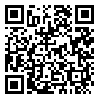Volume 1, Issue 2 (2014)
QHTS 2014, 1(2): 169-192 |
Back to browse issues page
Download citation:
BibTeX | RIS | EndNote | Medlars | ProCite | Reference Manager | RefWorks
Send citation to:



BibTeX | RIS | EndNote | Medlars | ProCite | Reference Manager | RefWorks
Send citation to:
nazemian R, Hajmomen H. Challenges and Techniques on Epithet Inclusion in translating Narrative Texts into Persian. QHTS 2014; 1 (2) :169-192
URL: http://qhts.modares.ac.ir/article-10-10172-en.html
URL: http://qhts.modares.ac.ir/article-10-10172-en.html
Abstract: (9481 Views)
One of the style-oriented features of narrative texts is frequent application of “epithet” with various functions. In documents and texts of narrations, epithet often refers to persons through expressing the parentage relationships, such as a proper noun; however, in addition to the foregoing, in many of cases not as per such parentage relationships, but through a virtual implication, it makes a certain name for someone to show him/her as considerable in being attributed to a certain feature, so that again it virtually names other phenomena or even abstract concepts. Whereas the epithet discussion is fully based on Arabic culture, it causes certain challenges in translating narrative texts into Persian; especially due to the fact that apparent inclusion of the same in Persian text as a proper noun hides the relevant variable semantic implications; like the fact that due to the syntax and spelling differences between Arabic and Persian languages, the aforementioned also causes further problems in terms of writing. The action of translating narrative text into Persian language enjoys a considerable background, but after all, the problems caused by epithet inclusion in such action have not been studied in any independent work. Relying on several samples taken from the narrations of Bihar Al- Anwar Book, this study addresses and analyzes some of the major issues caused by transferring epithet in translating narrative text into Persian and then practically gives certain solutions to solve such issues and problems.
Received: 2015/02/15 | Accepted: 2015/02/20 | Published: 2015/03/4
| Rights and permissions | |
 |
This work is licensed under a Creative Commons Attribution-NonCommercial 4.0 International License. |








